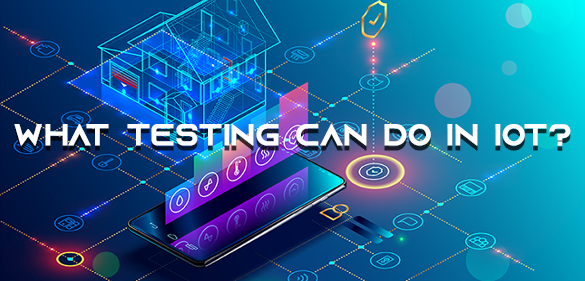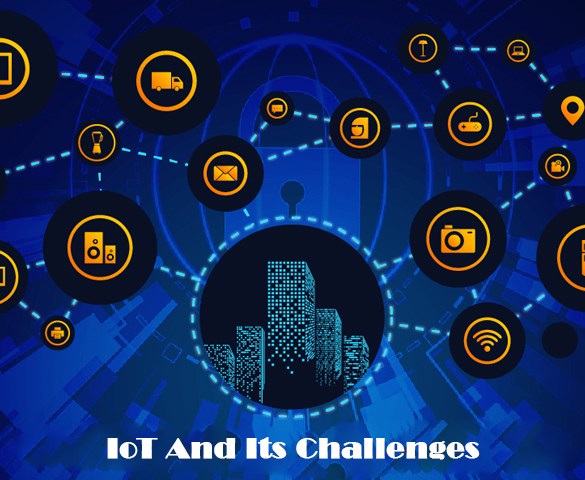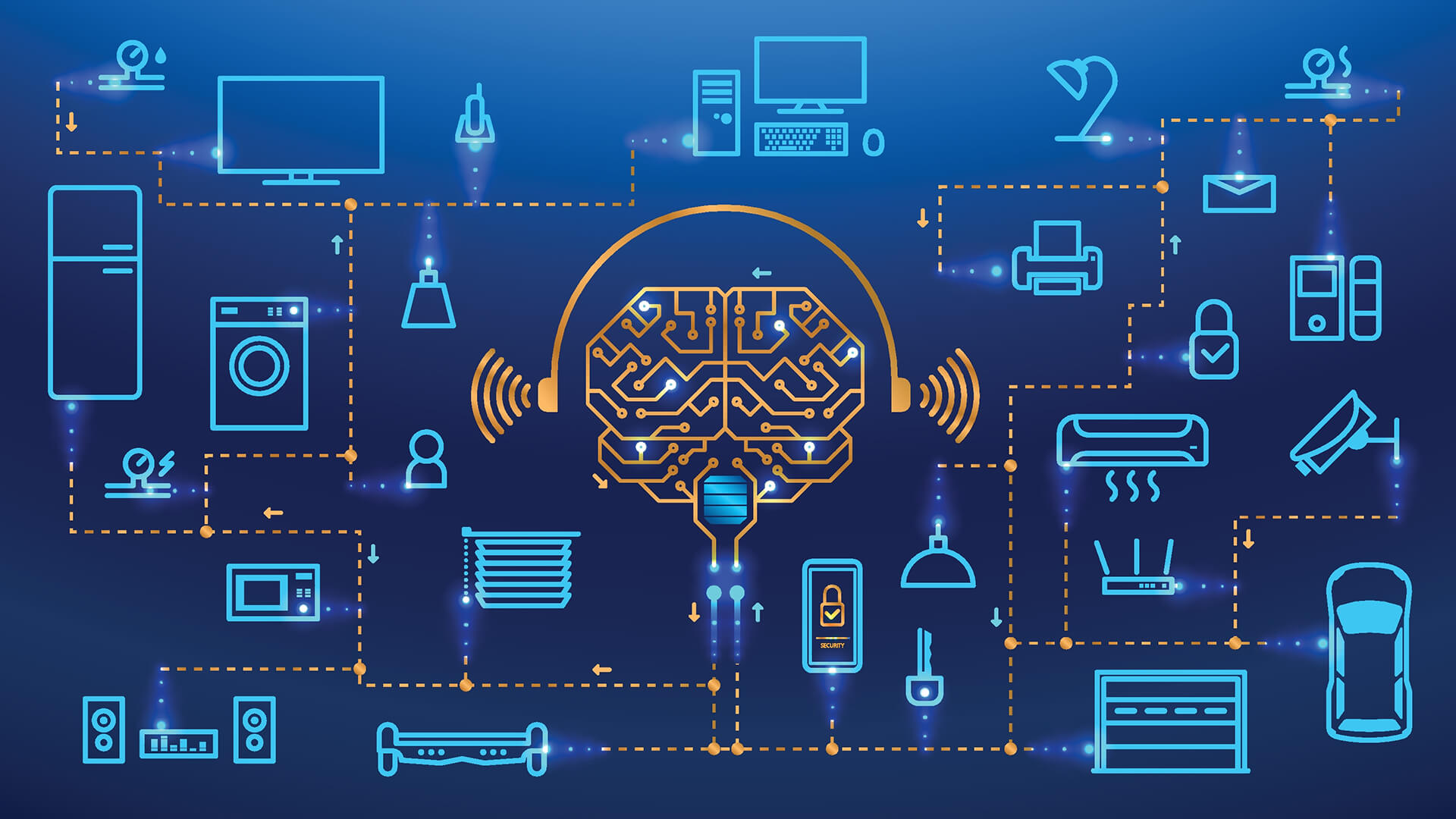Role of Testing for IOT Device and Solutions
We have already talked a lot about what is IOT, where it use, and how it useful in various fields. But when one IoT product comes in market it should be accurate and work perfectly for that “TESTING” is most important part for any IoT product or device. In this blog we will talk about how testing make more important role for IoT devices and solutions.
Testing for IoT:
IoT testing framework is important for deliver better and faster services, offer extra insight and control, over various interconnected gadgets.

IoT refers to a system consisting of gadgets/devices which are connected to one another through technology, and interacting without human intervention. When considering traditional strategies of testing, programming codes are built and tests are conducted more on a production level. However, modern approach requires any bugs and glitches to be captured at an early stage. In test-driven development approach, human interaction for manual testing is minimized, making it possible to capture errors faster and earlier.
IoT Testing Approaches

- Usability: Different devices are used by the users and the perception also varies from one user to other. Usability test make sure that the interface of AUT(Application Under Test) is built in a way that fits the user’s expectation with admire to meeting requirements easily in a simplistic satisfying manner. Primary focus is on ease of use, ease of learning or familiarizing with system. Usability in phrases of displaying data, processing data, pushing job tasks from the devices should be examined exhaustively.
- Compatibility: So many devices can be connected through IoT system. These devices have various software and hardware configuration. So possible combinations are huge. Testing items such as, multiple operating system versions, browser types and respective versions, generation of devices, communication modes is necessary for IoT compatibility testing. Compatibility is potential to stay and work collectively without any discrepancy. Compatible software applications also work on the equal setup.
- Connectivity: System must be available all time and ought to have seamless connectivity with stakeholders. For connectivity 2 things are most important to test,
- Connectivity, transfer of data, receiving job tasks from the devices need to be seamless while the connection is UP and running.
- The other situation is the connection down scenario. Doesn’t count how robust is the system and the network; there are probabilities that the system will go offline. Testing the offline situations as well. Once the system isn’t to be had on the network, there needs to be an alert. On the other side, there must be a mechanism in the system which can store all the data in it for the duration of the offline period. Once the system comes online, all that data should get propagated. Data loss should not be there in any situation.
- Security: In IoT environment, there are many users are accessing a huge amount of data. So it is important to validate user via authentication, have data privacy controls as part of security. In transferring of data, need to check that data is protected or encrypted.
- Performance: When testing is carried out, it is executed for 5-10 users at time and the propagated to 15-20 devices. In real time 200-300 users are connected to the system, the data that is propagated is much bigger than tested data. So at that time system performs the same even though the added data is propagated. Also test the monitoring utility to display the system usage, power usage, temperature etc.
- Regulatory: Think of the scenario which the product passes via all the testing steps but fails within the final compliance checklist. It is better to get regulatory requirements in the starting of the development cycle itself. The same should be made a part of the testing checklist. By that, make certain the product is licensed for regulatory checklist as well.
- Upgrade: IoT environment is an aggregate of multiple protocols, devices, operating systems, firmware, hardware, networking layers etc. When upgrade is performed, be it for the system or any of the involved items as stated above, thorough regression testing must be carried out/ strategy have to be adopted, so as overcome upgrade associated issues.
IoT Testing Challenges
IoT testing is key to ensuring that these IoT devices work appropriately for the intended environment. However, IoT testing has its very own set of challenges. Let’s take a look at number of the key challenges a team would face in testing IoT devices.
- a.Mesh of Hardware – Software: IoT is system; it consists of software and hardware both. In hardware part of this architecture, there are devices with specific functionalities, diversified communication gateways and innumerable data capturing sensors that are part of this system. Only functionality doesn’t help in completely certifying the system. There is continually dependency on other in terms of the environment, data transfer etc.
- b. IoT Data Protocol: There are multiple components in IoT system; they use different protocols to communicate with other. In that kind of situation, they have to be tested across various protocols and modules to ensure that the devices work seamlessly.
- c. Mix of UIs: IoT is spread across devices belonging to every platform like Android, iOS, windows, Linux etc. Now imagine the number of devices running these operating systems, and testing on each and every possible device is almost impossible unless automation testing is incorporated. This challenge which is tough to overcome.
- d. Inefficient Battery Life: Many IoT devices use battery power. For optimized battery life, these components should be tested in various situation or conditions and the right battery has to be chosen in order to maximize the life of IoT devices. One more thing is how the device will report the status to the cloud platform when the battery is low?!
- e. Network Availability: In IoT system all data being communicated in faster speeds all the time, so it has to be tasted in all kind of network connectivity. It becomes vital to test devices in different network conditions with the assist of network virtualization.
IoT Testing Tools
In IoT, there are various tools are used during testing IoT systems. They can be classified based on the target software and hardware.-
- Some Software testing tools are:
-
- Shodan: Shodan is an IoT testing tool which you can use to discover which of your devices are connected to the internet. It gives permission to you, keep track of all computers which are directly accessible from the internet.
- Wireshark: This is an open source and free network traffic analyzing software. This one has another version without GUI Is known as TShark.
- Tcpdump: It does similar jobs as that of Wireshark but it does not have GUI. It is a command line utility that displays sent and received TCP/IP and other packets over the network.
- Thingful: It is a search engine for the IoT. It allows secure interoperability between millions of object via the internet. This IoT testing tools also to govern how data is used and empowers to take grater decisive and treasured decision.
-
- Some Hardware testing tools are:
-
- JTAG Dongle: Similar to a debugger in PC applications. This helps in debugging the target platform code and show variable step by step.
- Software Defined Radio: This is used to emulate receiver and transmitter for a large range of wireless gateways.
- Digital Storage Oscilloscope: This is used to check various events with time stamps, glitches in power supply, signal integrity check.
-
- Some Software testing tools are:
Summarize
Iot testing is different primarily based at the system or architecture involved. Tasters should concentrate more on the TAAS [Test-As-A-User] approach rather than testing based on the requirements. One major role in IoT testing is the integration testing. If the integration test plan is accurate and robust sufficient to capture flaws in the system, IoT is more successful. IoT testing is tough and challenging task but, it is also very exciting as well for the testing team to certify such a complex mesh of devices, protocols, hardware, operation systems, firmware etc.
Our Solution
The epsilon electronics IoT validation solutions enables testing with a combination of actual devices, tools, and frameworks. In addition, IoT test framework provides all the capabilities required to perform functional validation, load simulation, and security verification. This is just a glimpse of our capabilities, as we have various tools and solutions that can be leveraged to perform end to end testing of IoT solutions.
For more connect with us by our mail id: info@epsilonelectronics.in

